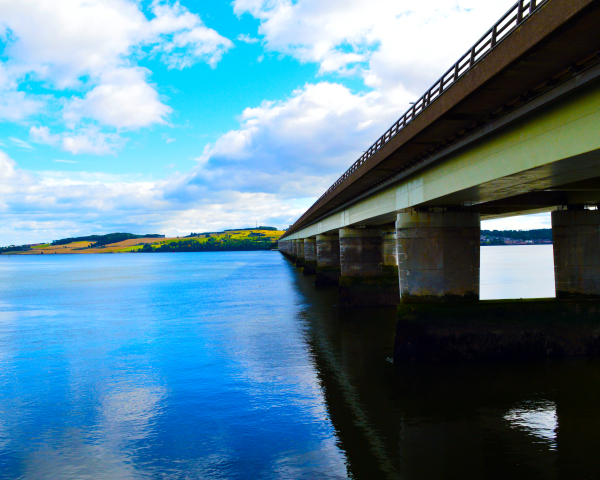
M5 Oldbury Viaduct
VolkerLaser was contracted to undertake the largest ever concrete repair project carried out in the UK on behalf of BMV – a joint venture between BAM Nuttal, Morgan Sindall and VolkerFitzpatrick. Works included concrete repair and waterproofing works on 3km of the carriageways between junctions 1 and 2 of the M5.

Works on the M5 Oldbury Viaduct
What we did
VolkerLaser commenced work on the National Highways site following six months of ECI work. At the outset of the project, an estimated 3,000 repairs were to be undertaken. However, when the team began to remove the viaducts surface and carry out a series of tests and trial repairs, it became clear this number would be much higher, and the project would be far more complex than originally envisaged.
The work site covered over 50,000m², meaning that although the works included some of our core capabilities – hydrodemolition, diamond drilling, continuity testing, installation of sacrificial anodes and reinstatement with pre-bagged flowable concrete – the scale of the work was unprecedented and created several logistical challenges.

Waterproofing along 3km of carriageway
The anticipated number of repairs more than doubled, and pressure was immediately placed on the team regarding programme. With works taking place on one of the busiest motorway routes, and lane closures causing considerable delays to the travelling public, collaboration was key to managing the programme in order to achieve completion with minimal delay to the planned finish date. To meet these requirements, we arranged our teams to work in two, full nine-hour shifts, six days a week.
Nine high pressure water jetting (HPWJ) crews from three specialist supply chain partners were employed to minimise the risk of resource provision being an issue on this critical activity, and repair materials were sourced from two separate suppliers, minimising risk of supplies being disrupted by plant breakdowns or quality issues. Operationally, as one team completed repairs after the HPWJ had passed through, another team began infilling. Shortly after, another team began to undertake surface preparation and waterproofing application. Steadily and consistently, works moved down the carriageway. This required constant collaboration with all subcontractors, as well as BMV and National Highways. Planning and progress monitoring was essential.
Works to the southbound carriageway
Due to working across such a large area, we made daily briefings a priority, running “Point of Work Briefings” and “End of Work Briefings”. It was mandatory for each operative to receive a “Start of Work Briefing” before being allowed on site, with “Point of Work Briefings” being undertaken by individual gangers, outlining specific risks to each work location. To ensure full collaboration and a lessons learnt mentality, “End of Work Briefings” were conducted for each gang to provide feedback, generating improvements for the next shift.
The project required an extension of time to complete but given the circumstances of more than double quantities, this was inevitable. Only eight months were required to be added to the original 14 month contract period.


